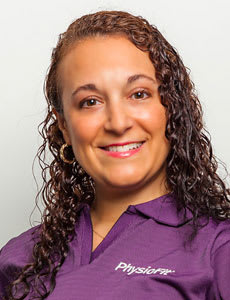
October is finally here, bringing with it the first signs of Fall, pumpkin-flavored treats, and most importantly; National Physical Therapy Month.
Since its inauguration by the American Physical Therapy Association (APTA) in 1992, PT Month has been a great opportunity to celebrate all PT professionals as well as recognize the transformative power of physical therapy.
PTs and PTAs help restore and improve motion in many people’s lives. This year, APTA hopes to raise awareness about the risk of opioids and all the ways physical therapy can help with pain management.
The theme for this year’s PT Month is #ChoosePT. This campaign hopes to let people know about the dangers of opioid use and promote PT as a safe alternative.
The Centers for Disease Control and Prevention (CDC) is urging healthcare providers to reduce the use of opioids in favor of safer options, like physical therapy.
Some of the potential side effects of opioid use are depression, overdose, and addiction. There are also possible withdrawal symptoms when stopping use. Because of these risks the CDC guidelines state,
“experts agreed that opioids should not be considered firstline or routine therapy for chronic pain”
Understanding Pain Management:
Let’s consider the main two problems with opioid-based pain relievers:
- They do not heal whatsoever.
- They are highly addicting.
Unlike antibiotics and other healing-based medications, opioids provide no medical benefit aside from pain relief. They interact with the user’s nervous system and nerve receptors. Pain relief is enormously necessary but must be monitored by professionals due to the side effects.
Dulling the nerve receptions results in relief from pain, and oftentimes the production of pleasurable feelings.
This brings us to our second point.
The issue is that this can—and often does—result in addiction. Addiction is a brain disease that results in the pathological pursuit of pain relief or pleasure at the expense of someone’s mental, emotional, and physical health.
It’s clear that providing a safe, non-addictive, alternative for pain relief is crucial. Physical Therapy can do this, and raising awareness will:
- keep people healthy
- saving lives by reducing opioid use
- combat the socially devastating impact of the opioid epidemic
Let’s further explore Physical Therapy as an alternative to opioid use.
We’re proud to work with so many fantastic Physical Therapy Professionals that devote their careers to changing people’s lives.
PhysioFit is here for you. #MoveBetterLiveBetter
 ABOUT THE AUTHOR
ABOUT THE AUTHOR
Kim Gladfelter, MPT, OCS, FAAOMPT
Women's Health Physical Therapy Specialist at PhysioFit Physical Therapy & Wellness
Kim Gladfelter is a physical therapist, Pilates instructor, educator, author, and co-founder of PhysioFit Physical Therapy & Wellness. She is known as a keen, well-rounded expert of healing through movement and women’s health specialist in the Silicon Valley area.
Kim has helped men and women of all ages to stay active and feel their best. She also writes about managing pain in her health columns, blogs and the local Los Altos Town Crier newspaper as well as reaches out to the local community, support groups, schools, libraries, and sports centers to advise and educate on body awareness and therapeutic exercise.

 Los Altos, CA
Los Altos, CA
